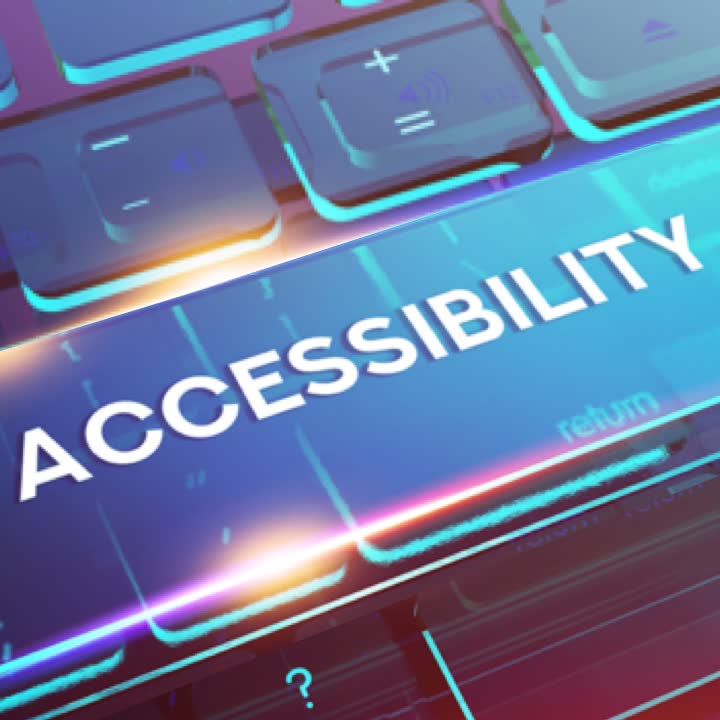There are two parts to being compliant with the Americans with Disabilities Act (ADA):
- Conforming to the WCAG guidelines
- Publishing a web accessibility policy or a statement.
The United States Department of Justice has frequently brought up either of these points and in fact, mandated the latter. But what is a web accessibility statement? And how do you write one?

Policy vs Statement
Before we start, it is important to know that it does not legally matter whether you use a policy or a statement. The DOJ says “accessibility information” is to be provided, but there isn’t a clear consensus on what to go with. Additionally, both of these serve the same purpose: to promise people that your organization takes web accessibility seriously, and is committed to becoming and continuing to be accessible to everyone.
So what’s the difference between the two? An accessibility statement is a shorter, crisper version of the accessibility policy, and contains a general idea of the organization’s approach to accessibility. The statement usually expresses the company’s idea of what accessibility is, how they plan on achieving or sustaining it, what are the methods being used for it, and what their capability is, while also leaving room for feedback and improvement.
An accessibility policy, however, is more detailed and intricate, containing details about the entire accessibility project: What is the end goal, and what’s the plan to get there? How is the company implementing it? What are the specific procedures followed for the implementation? What are the several deadlines for each of the processes (and what are the outlines for these processes?) How are the people involved in the accessibility project being trained, qualified, and onboarded? Who are the major points of contact, the various teams involved, and people in charge of key positions? What happens if the deadlines or targets are not met? These are some of the questions that a policy needs to answer.
Clearly, the accessibility policy is more for internal use management than anything, which is why a condensed accessibility statement seems a more reasonable and rational practice for businesses to follow for their websites. In fact, for most small and medium businesses, a policy and a statement might be one and the same.
In either case, it is important to include a clear, visible link to the accessibility page from the home page of your website. Most companies opt for the footer as an ideal place for the link since footers are universal to the website. Secondly, cross-check the information you have provided on the accessibility statement and make sure all the information provided (including the claims made) are one hundred percent true.
How To Write An Accessibility Statement:
- Provide a clear title or heading to the web page.
- State your policy, and express your commitment towards accessibility.
- Provide a way for readers and users to give you feedback. This could be from users who have encountered a problem you might have overlooked, or from well-meaning, knowledgeable individuals who can provide valuable inputs towards your accessibility goals.
- Clearly mention the accessibility guidelines and/or standards you aspire to meet on your website.
- Discuss the compatibility of your website’s performance with various tools and browsers, and specifically mention any accessibility limitations that may arise.
- Clearly mention all the specialist accessibility personnel (such as an accessibility coordinator) directly involved in your project.
- Mention all the individuals, teams, and if applicable organizations with whom your accessibility policy and its contents are shared.
- Mention if there are any supervisors or consultants overlooking your project, and if so, in what capacity they’re helping you achieve your accessibility target.
- Provide an overview of your accessibility testing methods.
- Talk about how you are training and educating members of your organization specifically with regards to accessibility.
- Discuss how you are compliant with the relevant accessibility laws (or how you plan on being compliant at the earliest).
- Mention relevant informational resources that provide insight into the technicalities and/or the legalities of web accessibility.
Apart from following these suggestions, your website does of course need to meet the WCAG guidelines to its best potential (and if you’re not sure where to start, we have a checklist to get you started at the earliest.)
However, it is crucial to make your website accessible at the earliest. Right now, less than two percent of all websites are ADA compliant. You don’t want to be one of the companies receiving a wave of lawsuits and demand letters your way and lose a massive amount of time, money, and resources to the fight.
At CodeGlo, we offer ADA compliance services (including accessibility statements, of course) that thoroughly audit websites and go beyond merely reporting the issues: we offer to remediate them as well. This ensures that you can continue working on what matters most to the competitive side of your business, without worrying about possible website issues and legal hassles distracting you. Talk to us before it’s too late.







